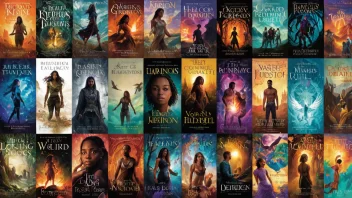In today’s literary landscape, genre blending has become a popular and effective way for authors to craft compelling narratives that defy traditional categorization. By combining elements from various genres, writers are able to explore complex themes, create innovative plots, and engage readers in fresh and exciting ways. This article delves into the role of genre blending in contemporary fiction, highlighting its significance, appeal, and impact on storytelling.
Breaking Down Boundaries
One of the most exciting aspects of genre blending is its ability to break down the rigid boundaries that have historically defined literature. By merging genres such as romance and science fiction, authors can create unique worlds where love stories unfold amidst futuristic settings. This boundary-breaking allows for greater creative freedom and encourages readers to explore narratives that they may not have previously considered.
Enhancing Character Development
Genre blending often leads to richer character development. In a typical thriller, characters might fit neatly into archetypes; however, when combined with elements from fantasy, these characters can gain depth and complexity. For example, a detective solving a murder in a magical realm may grapple with ethical dilemmas that challenge their beliefs and motivations, making them more relatable and layered.
Creating Unique Plot Structures
Blending genres can also lead to innovative plot structures that keep readers engaged. A narrative that combines mystery with historical fiction, for instance, can offer suspenseful twists while immersing readers in a specific time period. This interplay allows authors to play with expectations, keeping audiences on their toes as they navigate the intricacies of multiple genres.
Appealing to Diverse Audiences
By drawing elements from various genres, authors can appeal to a wider audience. A book that mixes horror with romance may attract fans of both genres, creating a larger readership base. This cross-genre appeal fosters inclusivity, inviting readers with different tastes to discover new stories that resonate with them. The more diverse the blend, the more likely it is to capture the interest of a broader demographic.
Reflecting Modern Life
Finally, genre blending reflects the complexities of modern life. Much like our experiences, which are often a mix of various influences and emotions, blended genres mirror the multifaceted nature of contemporary society. These narratives can tackle issues such as identity, culture, and the human condition, providing insights that resonate with readers on multiple levels. As society continues to evolve, so too does the literature that reflects its realities.
In conclusion, genre blending is not just a trend; it is a transformative approach to storytelling that enriches contemporary fiction. By breaking down boundaries, enhancing character development, creating unique plot structures, appealing to diverse audiences, and reflecting the complexities of modern life, authors are able to craft narratives that are engaging, thought-provoking, and deeply resonant. As readers, embracing these blended genres opens up a world of possibilities, inviting us to explore literature in ways that are more inclusive and innovative than ever before.






